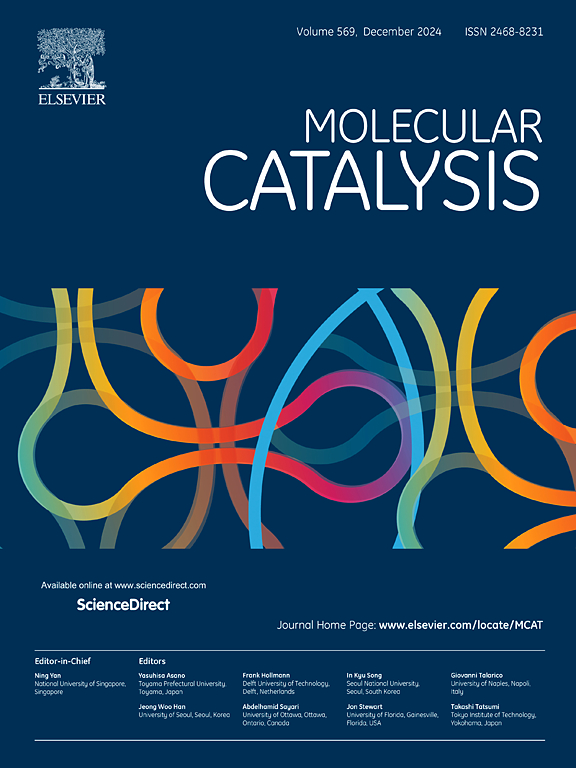Zn supported on composite materials as catalysts for fine chemical applications
IF 3.9
2区 化学
Q2 CHEMISTRY, PHYSICAL
引用次数: 0
Abstract
In this work, zinc supported composite catalysts were evaluated in the isomerization of β-pinene epoxide, limonene oxidation, and one pot synthesis of campholenic aldehyde from α-pinene. The composites materials were synthesized using CaCO3 and a mixture of aluminium and magnesium sources as the inorganic phases and the bisphenol A glycerolate dimethacrylate / triethylene glycol dimethacrylate polymerized mixture as the polymeric organic phases. The materials were characterized by NH3-TPD, CO2-TPD, XRD, Py-FTIR, XPS, ICP, TEM and SEM-EDX. Mainly Lewis acid sites were identified by Py-FTIR analysis of BTAlMg and Zn-BTAlMg. The basicity of BTCa and Zn-BTCa materials was identified by CO2-TPD. Over Zn-BTCa, α-pinene conversion of 73 % and campholenic aldehyde selectivity of 90 % were obtained. The oxidation of limonene over Zn-BTCa yielded a conversion of 36 % with a selectivity of 92 % and 8 % towards 1,2-limonene epoxide and 8,9-limonene epoxide, respectively. The isomerization of β-pinene epoxide over Zn-BTAlMg with dimethyl carbonate, gave 89 % β-pinene epoxide conversion and 100 % selectivity to myrtanal. The synthesized catalysts did not show leaching under tested catalytic reactions. After four reuses, the product selectivity did not significantly changed and the conversion decreased 7 % and 11 % in the oxidation of α-pinene and isomerization of β-pinene epoxide, respectively.

求助全文
约1分钟内获得全文
求助全文
来源期刊

Molecular Catalysis
Chemical Engineering-Process Chemistry and Technology
CiteScore
6.90
自引率
10.90%
发文量
700
审稿时长
40 days
期刊介绍:
Molecular Catalysis publishes full papers that are original, rigorous, and scholarly contributions examining the molecular and atomic aspects of catalytic activation and reaction mechanisms. The fields covered are:
Heterogeneous catalysis including immobilized molecular catalysts
Homogeneous catalysis including organocatalysis, organometallic catalysis and biocatalysis
Photo- and electrochemistry
Theoretical aspects of catalysis analyzed by computational methods
 求助内容:
求助内容: 应助结果提醒方式:
应助结果提醒方式:


